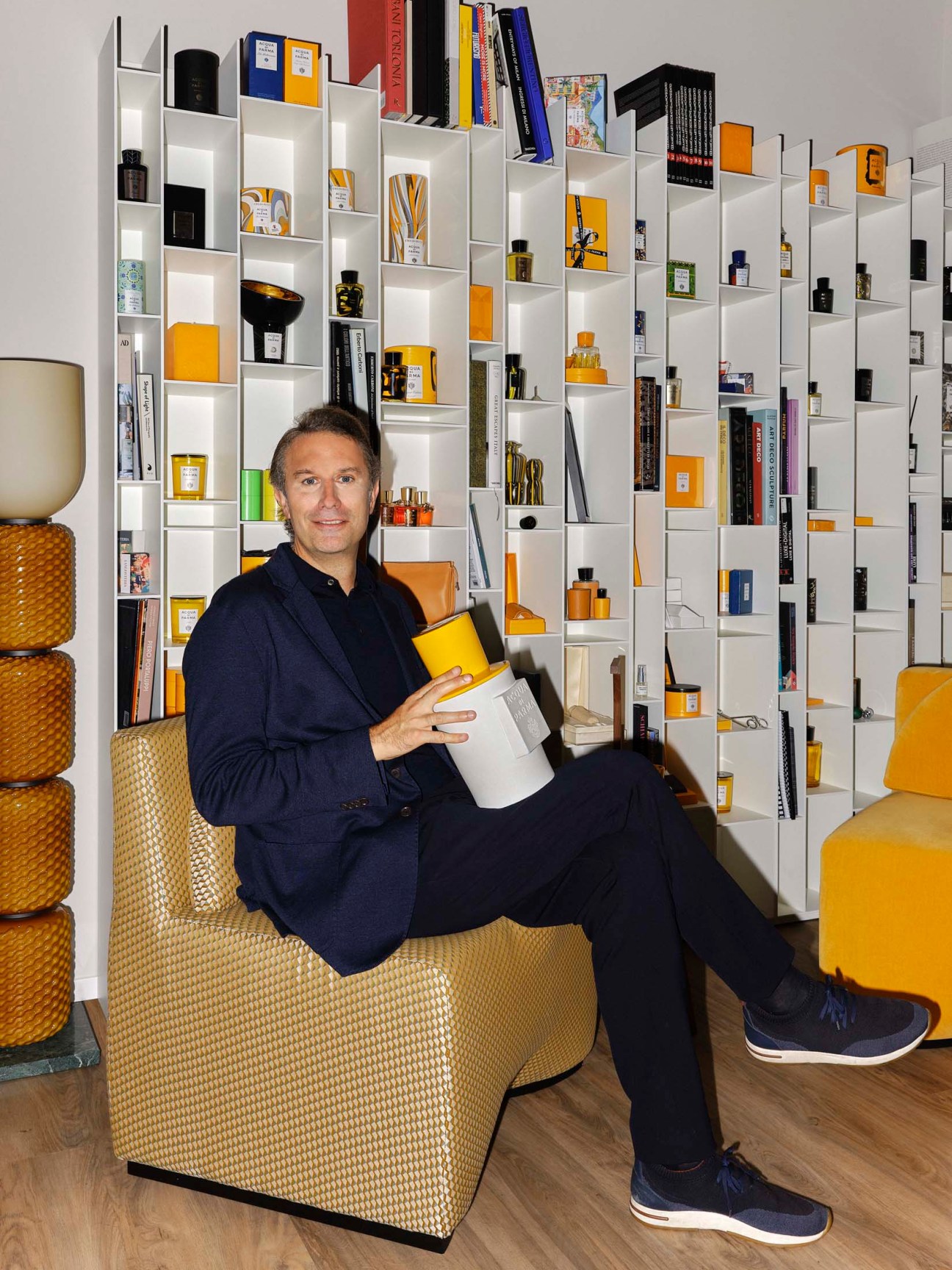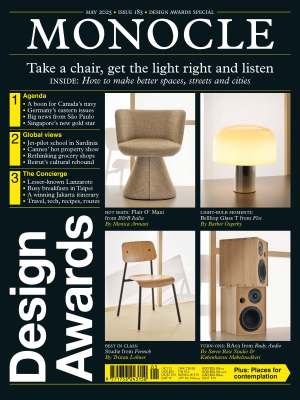Interview: Giulio Bergamaschi on Acqua di Parma’s art-of-living ambitions.
With its exposed ventilation ducts and industrial setting in southwestern Milan, Acqua di Parma’s HQ feels a little tech corp – surprising for a century-old perfume and lifestyle brand known for its sun-soaked yellow packaging and zesty fragrances. In fact, you’d half expect the Acqua di Parma mothership to occupy an opulent central-Italian castello.
While the company’s CEO, Giulio Bergamaschi, doesn’t want you to reconsider everything you think you know about Acqua di Parma, he has been leading a quiet revolution since joining the business in 2023. He might keep returning to words like “consistency” and “heritage”, but he is intent on introducing fresh perspectives on the brand’s signature products and inviting designers and artists to “play” with its perfume bottles and accessories.

While the 1990s saw a short-lived push into leather goods and bags (at the time, Acqua di Parma was part-owned by former Ferrari supremo Luca Cordero di Montezemolo and Tod’s chairman Diego della Valle), Bergamaschi is looking to turn back to craft. Under his watch, crockery, glassware and other home goods have been reintroduced, including a Murano glass collection in collaboration with French-Iranian architect India Mahdavi.
Founded by Baron Carlo Magnani in 1916 in the central Italian city from which it takes its name, Acqua di Parma started out distributing its flagship Colonia (cologne) through tailors’ shops. It has travelled some distance since then. Long based in Milan – and acquired by lvmh in 2001 – the brand is now eyeing new markets worldwide, opening standalone boutiques in cities such as Riyadh and New Delhi, and continuing to diversify its offer.
Bergamaschi, who took the reins after 19 years at L’Oréal and a short stint at LVMH stablemate Loro Piana, has been developing what he calls a “polysensorial” strategy, including a wide variety of products you can touch, see and smell. His vision extends Acqua di Parma beyond its signature perfume ranges and into every aspect of the art of living.
Speaking from his Milan office, filled with books and watercolour paintings by Acqua di Parma collaborator Luca Scacchetti, he tells Monocle how he plans to achieve his ambitious goals, all the while staying true to the house’s playful Italian spirit.
Acqua di Parma is a big brand but it sounds like you want to return to its roots.
Craftsmanship and the art of living have been at the heart of Acqua di Parma for a very long time. Since I arrived, we have looked to expand this dimension and find a space for it in our boutiques. It would be very difficult to give these pieces the right place in a wholesale shop or a department store.
Do you see these products as being sold solely in your standalone shops?
They’re going to be at very selected top stores, including our boutiques, of course, and places such as Harrods and Le Bon Marché. The role of our boutiques is to offer the pinnacle of the Acqua di Parma experience: the best immersion in the Acqua di Parma universe, the best advice, the widest offer, plus these masterpieces that are only available in very limited [quantities].
Why are limited-edition items worth the investment?
Today people are increasingly looking for creativity. This is something extremely important, not only in Europe and in the West but also in Asia. If you think about markets in the Far East, you might [assume] that there is standardisation. But these days, even if they have a huge scale, they’re looking for something special.
There is a concept in Italy that has always inspired me, called artigianato artistico (artistic craftsmanship). It’s an idea of craftsmanship in which the human dimension is very present, not only because there is the perfection or imperfection but also because the human injects creativity into the craftsmanship – and that’s why it becomes artistico. Is it art? Not exactly. Is it artiaganato? It’s more than that. Is it design? It’s not 100 per cent industrial. This is something that inspires me very much – and it is a north star that we are going to follow in the future.
What’s your retail strategy for Acqua di Parma?
Before looking at geographical expansion, we’re thinking about our current distribution and improving the shopping experience. We need to be more and more Italian but also [embrace] some local cultural codes. Of course, we are an Italian maison, so we need to be consistent and stand for Italian heritage and Italian values. But that does not mean that we need to standardise our image everywhere we go.
Fragrance is at the heart of what you do but it’s now a crowded marketplace. Has that made you change your approach?
It has only reinforced the importance of being consistent with heritage and working on an original value proposition. This is where I can bring a certain added value in making clear who we are, redefining our original angle and increasing the house’s creativity. Acqua di Parma has always stood for elegance, sophistication, craftsmanship and timelessness. But it is Italian – and, being Italian, it is also [synonymous] with a certain light-heartedness and playfulness.
This is embodied in all our new projects. You can see it in the Venetian holiday collection that we developed with India Mahdavi; and you can see it in the Chapeau [hat-shaped] candle with French designer Dorothée Meilichzon. Both those projects started from our iconic art deco fragrance bottles but we played with the patterns, colours and glass volumes.
Do you have an ultimate goal for the business?
To become the most desirable art of living brand – with an Italian soul, of course.


